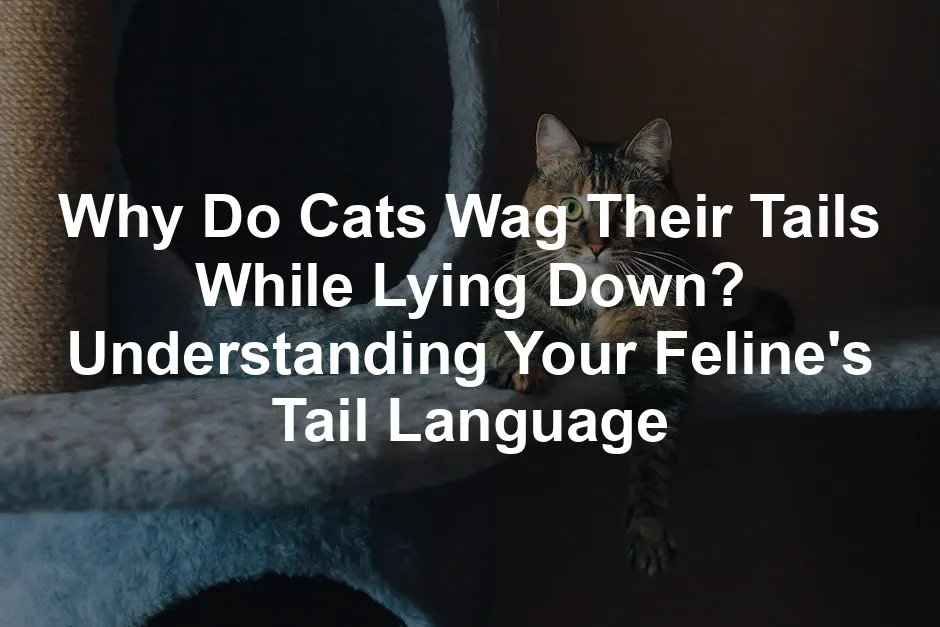
Why Do Cats Wag Their Tails While Lying Down? Understanding Your Feline’s Tail Language
Introduction
Cats use their tails to communicate feelings. Many people think tail movements only show happiness or anger. In reality, tail wagging reveals much more. This article will explore why your cat wags its tail while lying down.
Summary and Overview
Understanding cat tail behavior is essential for any cat owner. Cats express a wide range of emotions through their tails. A gentle swish can indicate contentment, while a quick flick may signify irritation. Context plays a crucial role in interpreting these movements. When a cat is lying down, its tail can reflect various feelings, from relaxation to annoyance. Observing tail movements helps you better understand your furry friend’s emotions and needs. By paying attention, you can enhance your bond with your cat and respond appropriately to their mood.
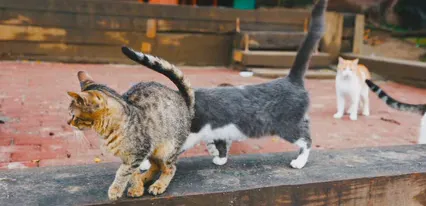
Speaking of enhancing that bond, why not treat your feline friend to the PetFusion Ultimate Cat Scratcher Lounge? It’s the perfect spot for your kitty to scratch, lounge, and observe the world from a comfortable perch. Plus, it saves your furniture from those little claws!
Why Do Cats Wag Their Tails?
Understanding Tail Language
Cats communicate a multitude of emotions through their tails. Each movement can mean something different, and understanding this “tail language” is crucial.
A slow wag while lying down often signifies relaxation. It shows your cat feels safe and content. In contrast, a rapid flick may indicate irritation or agitation. Notice how the tail’s position matters too. A tail held high can denote confidence, while a low tail might suggest fear or submission.
The speed of the tail movement is equally important. Quick, jerky movements often signal annoyance, while slow, gentle swishing indicates curiosity or mild interest. Unlike dogs, who typically wag their tails to show joy, cats use their tails to express a wider array of feelings. Observing these nuances can help you grasp what your feline friend is really feeling.
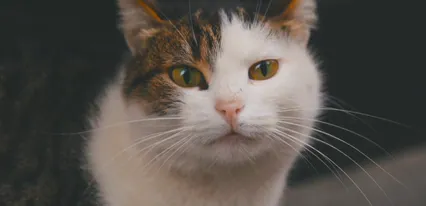
Understanding the nuances of your cat’s emotions can be complex, and if you’re curious about related psychological aspects, consider reading more about why do some people have a fear of public speaking (glossophobia).
And while we’re on the subject of understanding, why not reward your cat’s curiosity with the Yeowww! Catnip Banana Toy? It’s stuffed with potent catnip that will keep your kitty engaged and entertained for hours, making tail wags all the more joyful!
Emotional Expression
A cat’s tail wagging can be an emotional outlet. When lying down, a gentle sway often reflects contentment. It’s like a relaxed sigh in human terms. Conversely, if the tail twitches or flicks sharply, it may indicate discomfort or unease.
Pay attention to the overall body language alongside tail movements. Is your cat purring? That’s a good sign! But if you notice a tense posture or flattened ears, it may mean your cat is feeling stressed. Understanding these signals enhances your bond. Each cat has a unique personality, so take time to learn what their tail movements mean. Recognizing these cues can lead to a happier, healthier relationship with your furry companion.
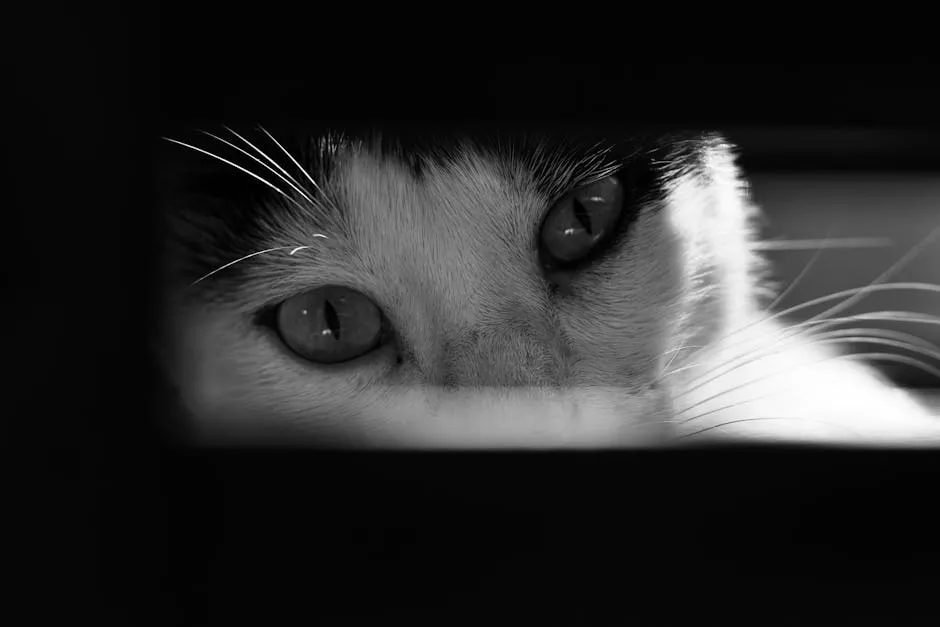
If you want to ensure your cat is cozy and relaxed while lounging, consider the PetFusion Cat Bed. It offers ultimate comfort and support, making it the perfect retreat for your feline friend to unwind.
Playful Mood
When cats wag their tails while lying down, it often signals playfulness. This tail movement can indicate eagerness and excitement, even in a relaxed position. Imagine your feline friend lounging, yet their tail flicks side to side. This behavior suggests they’re ready for fun.
Look for other signs of a playful cat. Wide eyes, perked ears, and a relaxed body posture usually accompany tail wagging. These cues show that your cat is alert and engaged, even while resting. It’s almost like they’re daydreaming about a game of chase or pouncing on a toy.
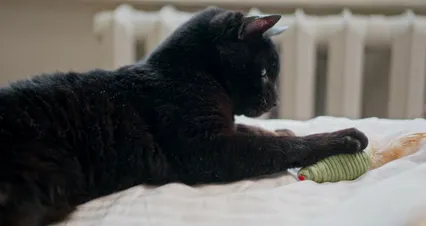
Next time you see your cat’s tail moving while lying down, consider it an invitation for play. Grab a feather toy or a laser pointer, and watch how quickly they spring into action. Cats thrive on play, and understanding their tail signals can enhance your bond. To keep them entertained, check out the SmartyKat Feather Whirl Cat Toy. It’s perfect for stimulating your cat’s hunting instincts and providing endless fun!
Curiosity and Attention
A wagging tail can also indicate curiosity, even when your cat is lying down. This movement often suggests they’re interested in something happening nearby. Maybe it’s a bird outside the window or a sound from another room. Their tail swishes as they focus on the source of their intrigue.
For example, if you hear an unusual noise, your cat might respond with a flicking tail. This indicates they’re attentive and observing closely. It’s as if their tail acts like a pointer, highlighting what’s caught their interest.
Keep an eye on your cat’s body language during these moments. Are they crouched low, ready to pounce? Or are they simply relaxed, enjoying the sights and sounds around them? Understanding these signals helps you connect better with your curious companion.

When it comes to keeping your cat hydrated, consider the Catit Flower Fountain. Its flowing water design encourages cats to drink more, which is essential for their overall health.
Social Signals
When your cat wags its tail while lying down, it often sends social signals. This behavior can invite interaction or engagement. It’s a way for your feline friend to say, “Hey, I’m here! Let’s play!” A gentle swish might mean they’re feeling friendly and open to companionship.
But how can you tell? Look for other body language cues. Is your cat making eye contact or purring? These signs often accompany a wagging tail, reinforcing their desire for some social time with you.
Tail movements serve as a communication tool, signaling various emotions. A slow wag might indicate comfort, while a more rapid flick could suggest they’re ready for some fun. By paying attention to these signals, you can better understand your cat’s mood and respond accordingly.
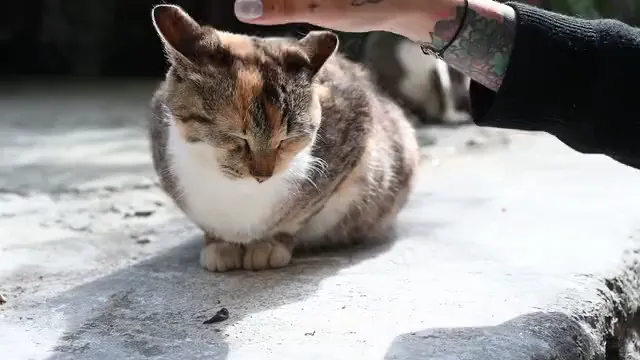
To keep those fun interactions going, consider the PetSafe ScoopFree Ultra Self-Cleaning Litter Box. It takes the hassle out of litter maintenance, giving you more time to play with your kitty!
Mixed Emotions
Tail movements in cats can reflect a blend of emotions, especially when they’re lying down. You might see a gentle swaying mixed with sudden twitches, hinting at conflicting feelings. For instance, your cat could feel relaxed but also curious or slightly annoyed.
Understanding these nuanced tail movements is essential. A slow wag could imply they’re at ease, but if it’s accompanied by a twitch, they might be experiencing mild agitation. The overall context matters significantly.
Observe your cat’s entire demeanor. Are their ears perked or flattened? Is their body tense or relaxed? These factors add depth to your interpretation. By recognizing mixed emotions, you can create a more harmonious environment for your feline companion.

To help your cat feel more secure, consider the Frisco Cat Tree with Condo. It provides a safe space for your cat to retreat to when they need a little downtime.
Warning Signs of Discomfort
Vigorous tail wagging while lying down can signal discomfort or agitation. If your cat’s tail is whipping back and forth rapidly, it may indicate they’re feeling threatened or annoyed. This behavior is a clear warning sign that something is off.
It’s crucial to pay attention to the context of their behavior. Are they in a space where they feel secure? Have there been changes in their environment? Alongside the tail movement, look for other signs of distress, like flattened ears or a tense body posture.
If you notice these signals, it’s best to give your cat some space. Understanding these warning signs can help you address their needs promptly. Recognizing discomfort early can prevent more significant issues and keep your cat feeling safe and secure.
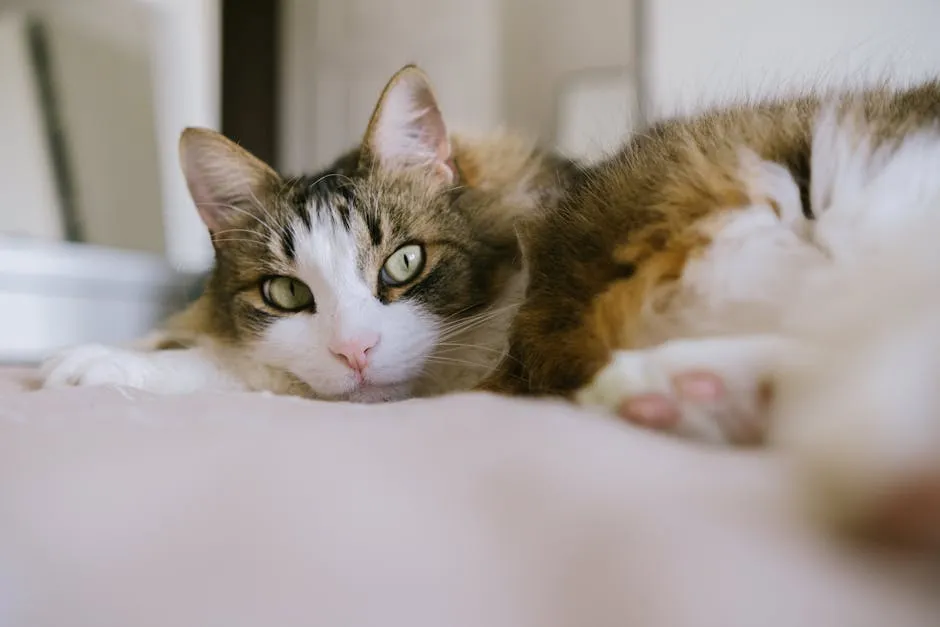
To help keep your home clean and your cat happy, consider the Tidy Cats Lightweight Cat Litter. It’s easy to clean and reduces the mess, giving both you and your cat a more pleasant experience.
Prey Instincts
Cats are natural hunters, and their tail movements can reflect this instinct, even while lying down. When a cat’s tail twitches or flicks, it often mimics the actions they would display while stalking prey. Imagine your cat, relaxed yet alert, with its tail gently moving side to side. This motion can signify their awareness of the surroundings, as they remain ready to pounce on imaginary targets.
The subtle tail movements may be a way for your cat to keep their hunting skills sharp, even in the comfort of your home. It’s like a reminder of their wild ancestors, always on the lookout for opportunities. This instinctual behavior highlights the connection between relaxation and alertness in cats. When you see this tail action, think of it as a nod to their primal urges, reminding you of the fascinating feline nature hidden beneath their charming demeanor.
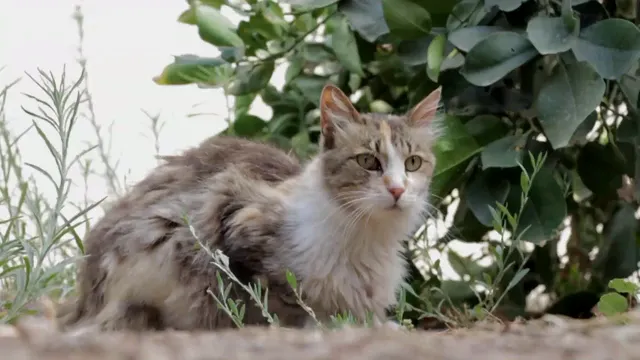
Health Indicators
Unusual tail wagging can sometimes signal health issues. If your cat’s tail starts moving in ways that seem off—like constant flicking or erratic movements—take note. These behaviors might indicate discomfort or pain. For example, a cat that suddenly begins to wag its tail differently may be experiencing underlying health concerns.
Changes in tail movements could accompany other symptoms, such as lethargy or changes in appetite. If your cat exhibits these signs, it’s essential to consult a veterinarian. Early intervention can lead to better outcomes for your furry friend. Paying attention to these tail behaviors can ensure your cat remains healthy and happy. Always remember, if something seems off, it’s better to be safe and seek professional advice.

And speaking of health, if you’re looking for a way to keep your cat’s coat shiny and healthy, the FURminator deShedding Tool for Cats is a must-have. It helps reduce shedding and keeps their fur looking fabulous!
Conclusion
In conclusion, observing your cat’s tail movements can provide valuable insights into their feelings and instincts. From reflecting their prey drive to signaling potential health issues, each wag tells a story. Encourage yourself to watch your cat’s tail closely. Understanding these signals can deepen your connection with your pet. Remember, every cat has a unique way of expressing themselves, and by tuning into their tail language, you’ll foster a more harmonious relationship.
Please let us know what you think about our content by leaving a comment down below!
Thank you for reading till here 🙂
All images from Pexels




